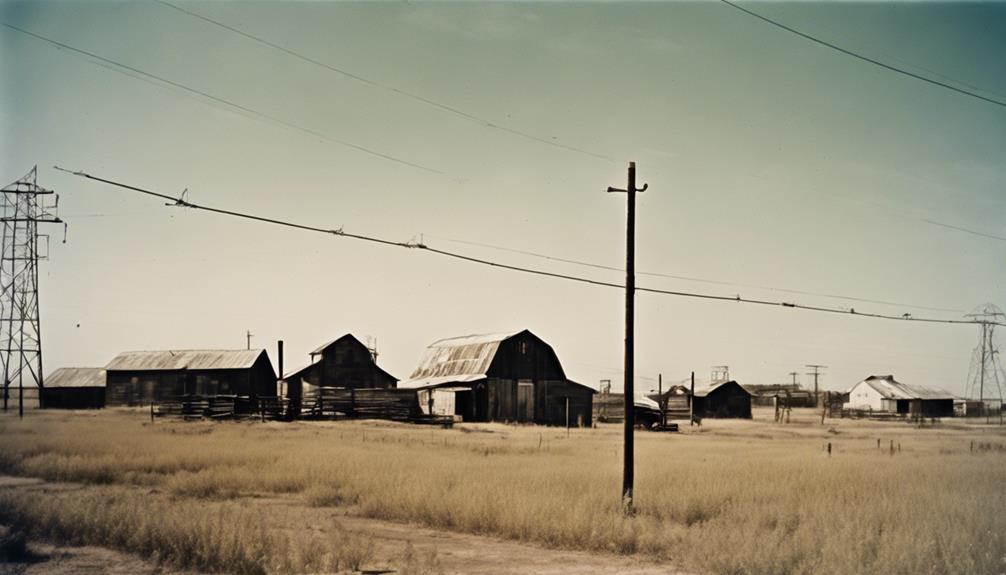
Understanding the long-term causes of the Civil War involves carefully examining several factors that contributed to the conflict. These include economic concerns, social tensions, political events, and ideologies, all of which played a significant role in steering the country toward war.
Yet, at its core, the issue of slavery was the most contentious. By exploring these causes, we'll unravel the intricate regional disagreements and conflicts between the North and the South that eventually brought about one of the most important chapters in American history.
Key Takeaways
- Economic disparities and disagreements over tariffs fueled tensions between the North and South.
- Cultural and social divisions, particularly regarding slavery, intensified the divide between the regions.
- Political events and ideologies, such as the Kansas-Nebraska Act and the Dred Scott decision, deepened the divisions.
- Slavery was the central cause of the Civil War, magnifying regional differences and leading to irreconcilable division.
Economic Factors That Contributed to the Civil War
The economic reasons behind the Civil War were complex and played a big role in the tensions leading up to the conflict.
One major economic issue was slavery. The Southern states depended on slave labor for their farms, especially for growing cotton, a key export. This dependence made their economy closely tied to slavery, and they saw any threat to this system as a threat to their financial well-being.
Another issue was the difference in industrial development between the North and the South. The North had seen a lot of industrial growth, with strong manufacturing industries and a varied economy. On the other hand, the South was mostly agricultural and had little industrial development. This difference caused tensions, as the North wanted to protect and grow its economy while the South felt threatened by policies that might hurt its farm-based economy.
Tariffs also caused economic tensions. The North supported high tariffs to protect its industries, but the South, which depended on international trade, was against them. This conflict over tariffs made the economic divide between the North and the South even wider, adding to the tensions that eventually led to war.
Social Tensions and Divisions Before the Civil War
Social tensions and divisions before the Civil War stemmed from deep complexities in American society, highlighting the deep ideological differences between the Northern and Southern states. Several factors fueled these divisions, including:
- Slavery: The institution of slavery was a major source of contention between the North and the South. While the Northern states were increasingly moving towards abolitionism, the Southern states relied heavily on slave labor for their agrarian economy. This fundamental difference in the treatment and perception of enslaved individuals created a stark divide between the regions.
- Cultural differences: The Northern and Southern states developed distinct cultural identities over time. The North, with its industrialization and urbanization, embraced modernity and progress. On the other hand, the South held onto its agrarian, traditional way of life, emphasizing the importance of agriculture, honor, and social hierarchy.
- Political power: The question of political power and representation also exacerbated tensions between the North and the South. The Southern states feared that their interests would be overshadowed and disregarded by the growing influence of the North in the federal government.
- States' rights: The concept of states' rights further divided the country. The Southern states believed in the primacy of state sovereignty and the ability to make decisions independently of the federal government. This clashed with the Northern perspective, which emphasized a stronger central government.
These social tensions and divisions were influential in shaping the political events and ideologies that ultimately led to the outbreak of the Civil War. Understanding and analyzing these factors is crucial to comprehending the long-term causes of this devastating conflict.
Political Events and Ideologies Leading to the Civil War

To truly understand the causes of the Civil War, one must explore the complex mix of political events and differing beliefs that sparked the conflict. The run-up to the Civil War saw numerous events and ideologies that widened the gap between the North and the South.
A pivotal political event was the enactment of the Kansas-Nebraska Act in 1854. This law allowed states to choose whether to allow slavery, leading to violent clashes between supporters and opponents of slavery. It not only intensified the nation’s division but also emphasized the growing struggle over allowing slavery in new areas.
The Dred Scott decision in 1857 was another crucial moment. The Supreme Court declared that African Americans, whether enslaved or free, were not U.S. citizens and had no legal rights. This ruling angered abolitionists and intensified the slavery debate.
On the ideological front, the North and South had starkly different views on slavery. The North was increasingly adopting abolitionist stances, pushing for the end of slavery. Meanwhile, the South saw slavery as essential to their way of life and economy.
These political dynamics and ideological differences were key in setting the stage for the Civil War. They deepened the rift between the North and South, making compromise more challenging. The following section will discuss slavery's central role in sparking the war.
Slavery as a Central Cause of the Civil War
Slavery, with its deep-rooted institution and divisive nature, emerged as a central cause that fueled the outbreak of the Civil War. The following factors shed light on the significance of slavery as a catalyst for the conflict:
- Economic Backbone: Slavery formed the backbone of the Southern economy, particularly in agrarian states heavily reliant on cash crops like cotton. The profitability of plantations rested on the forced labor of enslaved Africans, leading to a strong pro-slavery sentiment among Southern elites.
- Moral Dilemma: The institution of slavery clashed with the ideals of freedom and equality espoused by the Northern states. Many abolitionists, inspired by the principles of the American Revolution, vehemently opposed the practice and sought its eradication.
- Political Power Struggle: As the nation expanded westward, the question of whether newly admitted states would allow slavery intensified. Both the North and the South vied for control of Congress to ensure favorable legislation regarding slavery's expansion or abolition.
- Sectionalism and States' Rights: The issue of slavery magnified regional differences between the North and the South. Southern states argued for states' rights, asserting their authority to maintain slavery within their borders, while Northern states advocated for federal intervention to curb the institution.
These factors, intertwined with other long-term causes, created an irreconcilable division between the North and the South, ultimately leading to the eruption of the Civil War.
Regional Differences and Conflicts Between the North and the South

Regional differences and conflicts between the North and the South significantly contributed to the Civil War, escalating tensions and deepening the divide. These disparities arose from contrasting economic systems, social structures, and political beliefs.
The North, experiencing rapid industrial growth, supported modernization and urbanization. In contrast, the South's economy was heavily based on agriculture, especially cotton farming, which relied on slave labor. The North's shift to an industrial economy led to increased wage laborers and a push for tariffs to protect domestic industries from international competition. However, the South, focusing on agriculture, opposed high tariffs, as they would raise the cost of imported goods, including those manufactured in the North.
Additionally, the North's resistance to the spread of slavery into new territories, due to both moral and economic considerations, further widened the gap between the regions. These regional differences and disputes eventually led to the Civil War, with the North and South becoming more entrenched in their opposing views and unable to resolve their conflicts peacefully.
Frequently Asked Questions
What Were the Major Military Battles and Strategies Used During the Civil War?
The major military battles and strategies used during the Civil War were diverse and evolved over time. Key battles included Gettysburg and Antietam, while strategies like the Anaconda Plan and Sherman's March to the Sea influenced the war's outcome.
What Were the Immediate Consequences and Aftermath of the Civil War?
The immediate consequences and aftermath of the Civil War included the abolition of slavery, the reconstruction of the Southern states, the rise of the Ku Klux Klan, and the political and social changes that shaped the United States for years to come.
How Did the Civil War Impact the Lives of Women and Minorities?
The Civil War had a significant impact on the lives of women and minorities. It brought about changes in societal norms, such as the abolition of slavery and the emergence of the women's suffrage movement, which laid the foundation for future advancements in civil rights.
What Role Did the International Community Play During the Civil War?
The international community played a significant role during the Civil War, with countries like Britain and France deciding whether to recognize the Confederacy or support the Union. This external involvement had implications for the outcome and long-term causes of the conflict.
How Did the Civil War Affect the Economy and Infrastructure of the United States?
The Civil War had a profound impact on the economy and infrastructure of the United States. The conflict disrupted trade, destroyed infrastructure, and led to significant changes in the labor force and agricultural practices, ultimately shaping the nation's economic and social landscape.
Conclusion
In conclusion, the long-term causes of the Civil War can be attributed to economic factors, social tensions, political events, and ideologies. The central issue of slavery and regional differences and conflicts played significant roles in this historical event.
These factors converged over time, leading to a deep divide between the North and South. Understanding these underlying causes helps shed light on the complexities of this pivotal moment in American history and highlights the intricate web of factors that ultimately led to the outbreak of the Civil War.






